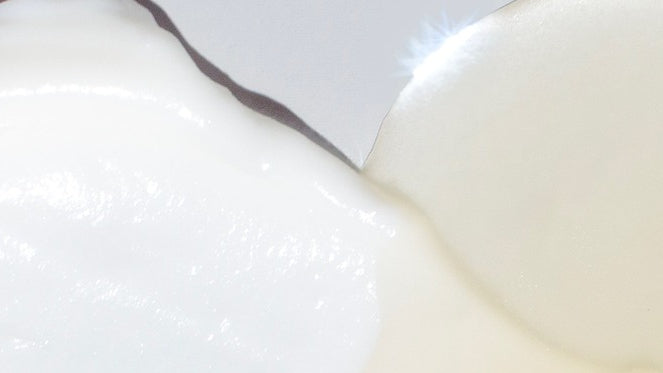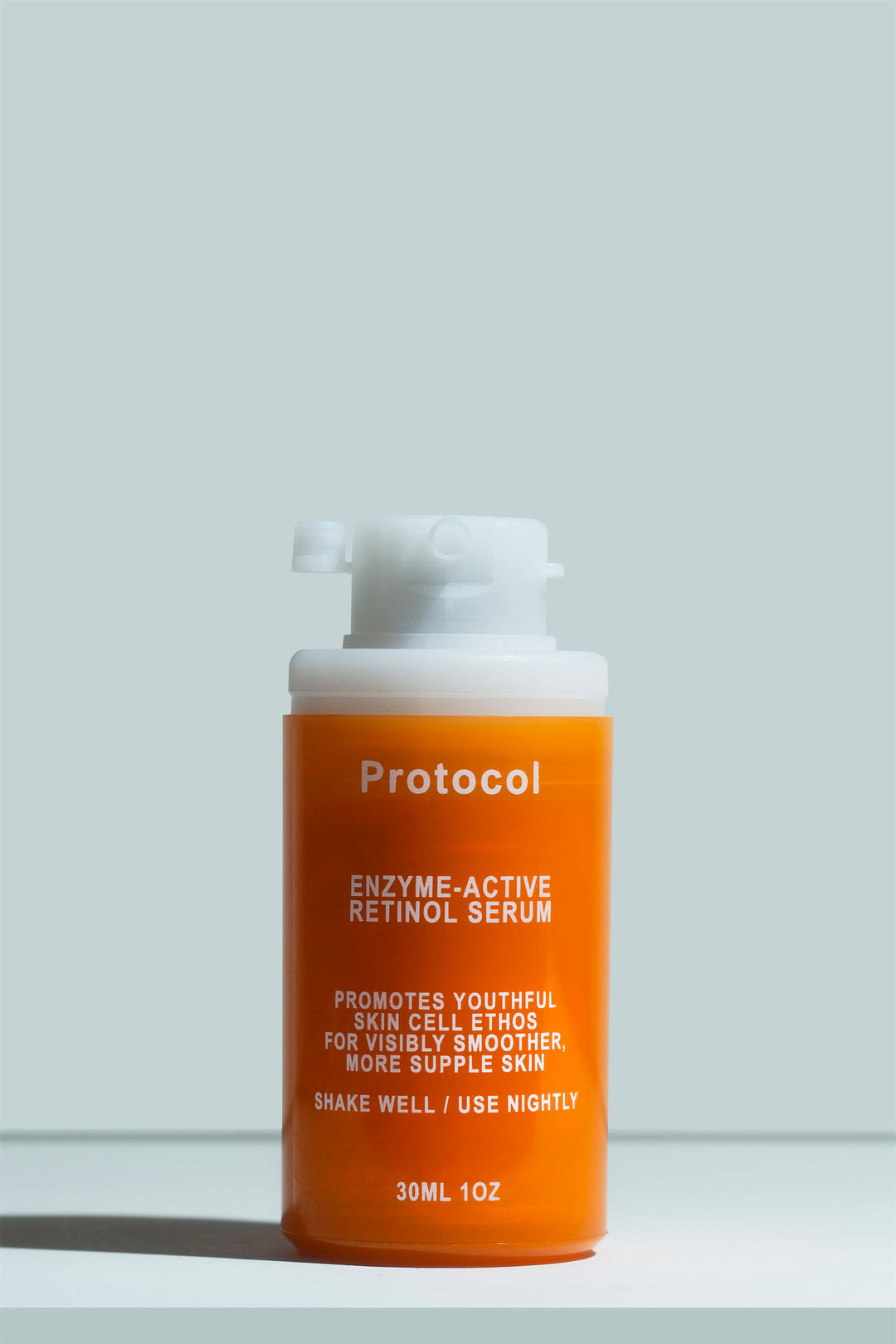Niacinamide vs Vitamin C: Which Should You Use?

It’s no secret that we adore vitamin C and niacinamide. The two ingredients deserve a spot in most skincare routines, especially if you want to preserve the youthfulness of your skin, fade discoloration, or achieve that coveted glow everyone is talking about.
And that’s just the start: Whether your skin is oily or dry, sensitive or resilient, one of the two will offer you some major benefits. So in this guide, we’ll cover everything you should know about niacinamide vs vitamin C, including their specific benefits, gentleness, and even how to use them.
Key facts: niacinamide vs vitamin C
- Niacinamide is a gentle, do-it-all ingredient with benefits for all skin types.
- Vitamin C is a powerful antioxidant with skin brightening and wrinkle-fading effects.
- Niacinamide is a little milder than vitamin C, but this also depends on the percentage and formula.
- Niacinamide is easy to formulate, so it can come in a lot of different types of products.
- Vitamin C is a little more finicky, and demands very careful formulations - many vitamin C products don’t work at all.
- For best results, use vitamin C and niacinamide together in the same routine!
What’s vitamin C and what does it do?
Vitamin C is the skincare world’s top antioxidant. This vitamin, especially in its bioactive form as ascorbic acid, is incredibly effective at protecting the skin from oxidative damage. It neutralizes free radicals, which are the external aggressors that break down the skin, leading to premature aging and hyperpigmentation.
Studies show that vitamin C in skincare can help improve many of the markers of photoaging, helping create smoother, more even-toned skin. It boosts collagen production to fade wrinkles and inhibits
While vitamin C is available in several different forms, it's only the l-ascorbic acid form that has much scientific backing as a skincare ingredient. It’s a purer but less stable form of vitamin C that requires a special formulation to remain active.
What’s niacinamide and what does it do?
Niacinamide is also a vitamin - it’s a form of vitamin B3 with a lot of skin benefits. It has exploded in skincare in recent years, and for a good reason: It helps with just about any skin concern you can think of.
That includes premature aging, hyperpigmentation, breakouts, sensitivity, oiliness, large pores, and more. Studies show that niacinamide is effective even at lower percentages, between 2% and 5%.
Unlike many other ingredients with such effects, niacinamide is very mild. It actively soothes and fortifies the skin barrier. That said, there is a small percentage of users who find it doesn’t work for them, especially when used at higher percentages than research suggests is necessary.
Vitamin C vs niacinamide comparison
When deciding between vitamin C and niacinamide, these are the key factors to consider.
Skin benefits
Some of the benefits of niacinamide and vitamin C are similar on paper. Both ingredients can do the following:
- Fade hyperpigmentation
- Reduce wrinkles
- Protect the skin from premature aging
As for differences, vitamin C is more potent and targeted at what it does, especially when it comes to bolstering the skin’s antioxidant protection. It can enhance the photoprotective ability of sunscreen, for example.
Niacinamide’s skin benefits are far more diverse, especially for those with sensitive or oily skin. In addition to fading pigmentation and reducing signs of aging, it can help with many other skin concerns. It can help reduce signs of sensitivity, minimize pores, control oil production, and help fade blemishes.
For those deciding between vitamin C vs niacinamide for dark spot treatment, vitamin C’s mechanism of action for fading pigmentation is a little more multi-faceted, so it may lead to better results. However, the two ingredients haven’t been compared head-to-head on this front, and ultimately, a routine with plenty of vitamins for dark spots will ensure the best results.
Product types
Vitamin C and niacinamide are both available in different leave-on formulas, including serums, toners, and creams. But just because they’re available in all of these different forms doesn’t mean they all work.
Between the two, niacinamide is easier to formulate. It's stable at a more neutral pH, it blends well with other ingredients, it’s effective at lower percentages, and it’s less delicate. That’s why it can be used in creams, serums, and even sunscreens.
You can find niacinamide in our Enzyme-Active Retinol Serum since it pairs especially well with retinol, and in our Hyaluronic Acid & Niacinamide Hydration Cream where it helps boost the skin’s production of barrier lipids while balancing sebum production.
Vitamin C only has notable effects in its pure, active form as ascorbic acid. However, for ascorbic acid to penetrate and impact the skin, it has to adhere to some very specific formulation criteria. It must be formulated as a water-based serum and a quantity between 8%-10%. Additionally, for vitamin C to remain active and stable, it needs to be formulated at a pH lower than 3.5 and stabilized in a container that protects it from any exposure to the sun and air.
This means that most vitamin C products aren’t effective at all. They often aren’t formulated or packaged in a way that keeps them stable and bioavailable assuming they even contain a bioavailable form of vitamin C in the first place.
One of our greatest challenges at Protocol Lab was developing a production process that would keep our Vitamin C Superserum truly effective. Through a patented manufacturing process, we were able to achieve our goal of creating the most radically bioactive vitamin C serums on the market.
Gentleness
The gentleness of vitamin C vs niacinamide comes down to a few factors.
Generally, niacinamide is gentler and less likely to irritate the skin, especially when it’s formulated between 2% and 5%. It can even help reduce redness, bolster the skin barrier, and reduce other visible signs of skin sensitivity.
Vitamin C can be more gentle or more irritating depending on how it’s formulated, and finding a good balance can be difficult. Often, vitamin C products irritate the skin because they’re formulated at too low of a pH level or with more vitamin C than the skin can absorb.
There’s less room for error, and at Protocol Lab, we had to work hard to find the perfect balance of stability, efficacy, and gentleness with our unique formula. By stabilizing our vitamin C serum through a meticulous, airless packaging process, we were able to create a potent product that’s quite gentle nevertheless.
Can you use niacinamide and Vitamin C together?
Yes, you can use niacinamide and vitamin C together!
Niacinamide and vitamin C aren’t too picky about when you use them.
In our recommended basic skincare routine, we suggest using vitamin C in the daytime since it can help support your sunscreen’s stability. Since it’s a water-based ingredient, it’s important to apply it as the first leave-on step in your skincare routine, to ensure it can penetrate as much as possible.
Niacinamide can be used both in the morning and at night, and it’s effective in many more types of products. Sunscreens with niacinamide can be great in the daytime, while niacinamide moisturizers or serums can be used either in the day or night.
Is It better to use niacinamide or vitamin C? Final Verdict
It isn’t fair to say that either niacinamide or vitamin C is a better ingredient. Each one works a little differently, offers unique benefits, and works for most skin types.
For those whose skincare routine is focused on protecting their skin and fading signs of premature aging, vitamin C is worth trying first. Its photoprotective abilities make it a daytime must-have!
For those with sensitive, oily, or acne-prone skin, it might make more sense to start with niacinamide. You’ll enjoy its mild anti-aging and protective effects while benefitting from niacainmide’s skin-soothing and balancing effects.
But fundamentally, the best results come from including both vitamin C and niacinamide in your skincare routine (with retinol thrown in for even more smoothness and renewal). The Protocol range takes into account that finding the right balance of these skin-loving ingredients isn’t always easy.
We’ve found a way to optimize each ingredient’s bioavailability, and to put them together into a renewing line that transforms the skin while minimizing risks of irritation.




